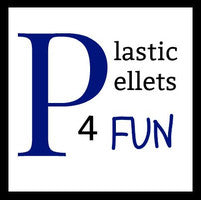Hello again you Pellet Pundits! This post is going to discuss one type of inconsistency that we can find when shopping for plastic pellets. If you have purchased pellets from different sources you are probably wondering why the different types and varieties of pellets are shaped so differently?!?! Some pellets appear to be almost perfectly round and spherical and the shape of each pellet is very consistent. Some are shaped like a miniature flying saucer with a disc-like in appearance. Some are shaped like miniature cylinders. You may even run into some pellets which have two or more different shapes in the same box! Lets explore the reasons for these different shapes and why it is important.
There are basically two different types of methods to pelletize plastic polymers. The first is simple to understand and conceptualize. It is termed a "strand cut". This process utilizes a round shaped die through which the extruded polymer is forced or extruded resulting in long thin "strands" of plastic string similar to a thick copper wire in shape. The material is directed into a water bath where it is quenched and then cut into very small cylindrical pellets. This process is used frequently for colored polymers which are used to make colored plastic parts or film. These colored pellets are often used in flower vase containers to anchor artificial flower arrangements in an attractive arrangement. The entire spectrum of colors are available in this pellet geometry. We will be offering colored pellet varieties soon.
The second type of pelletizing process is call "underwater pelletizing". In this process the pellets are extruded through a circular or rounded orifice in the same manner, however, the pellets are immediately exposed to a "cutter" and dropped into a water bath. This process results in the spherical or rounded pellets. The pellet geometry is determined by the rate and polymer characteristics as well as other processing parameters. Even the same polymer can be made into different shapes by changing the process, so consistency can be a challenge sometimes. Pellets can be mixed from different lots of material. This will result in different shaped pellets in the same box!
So why is the shape of the pellet so important sometimes? One of the biggest factors to consider is the impact of the shape on he bulk density of the material. This has a large impact on the number of pellets you get for the dollar you spend. Bulk density is discussed in another blog post entitled, "How much do I need?", so we will not discuss this more here. The shape of the pellet can also have an impact on the way the pellets slide and slip over each other. Typically, the rounder the pellet, the easier to slide and move. Additives in the plastic can also impact this. Soon we will be offering a product with a "slip" additive which will allow the pellets to slide around very freely. This can be very good for cornhole bags, rifle rests, and other applications where free flowing pellet movement is important! Finally, on one occasion one of our customer indicated that the shape of the pellet helped her customer to soften the impact of objects in a tumbler. She was more interested in a flat profile which will cushion objects in a tumbler. Often you will find low quality suppliers who sell pellets without any indication of these properties and geometry. They will even use an obsolete picture to show a pellet which is not even the same color as what they are selling. BE CAREUL when you buy and be sure to buy from a reputable dealer. We do this for a living...so we can assure you that the value we deliver is the best in the business!!! Good luck with your projects and HAVE FUN!!!

2 comments
Great article. Thanks for simple explanation.
Darrell Williams
Hello, I have an ETSY business, I make weighted blankets. Is this your wholesale price? And how do you ship? How big is each container? I would need to order right away at least 250 pounds. Thank you, GospasLavender.etsy.com
Joyce Wittman